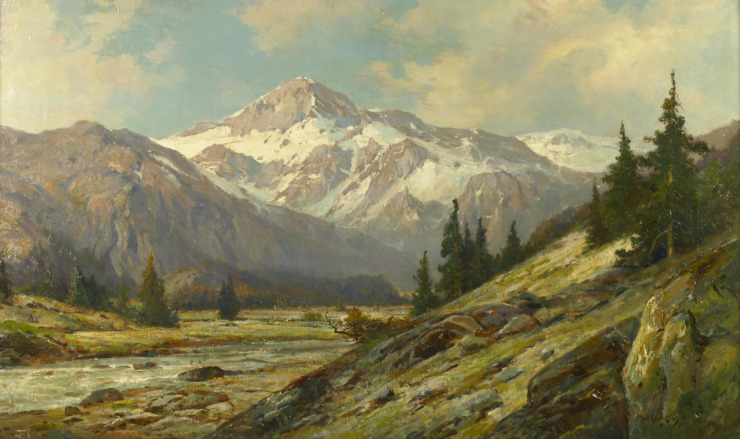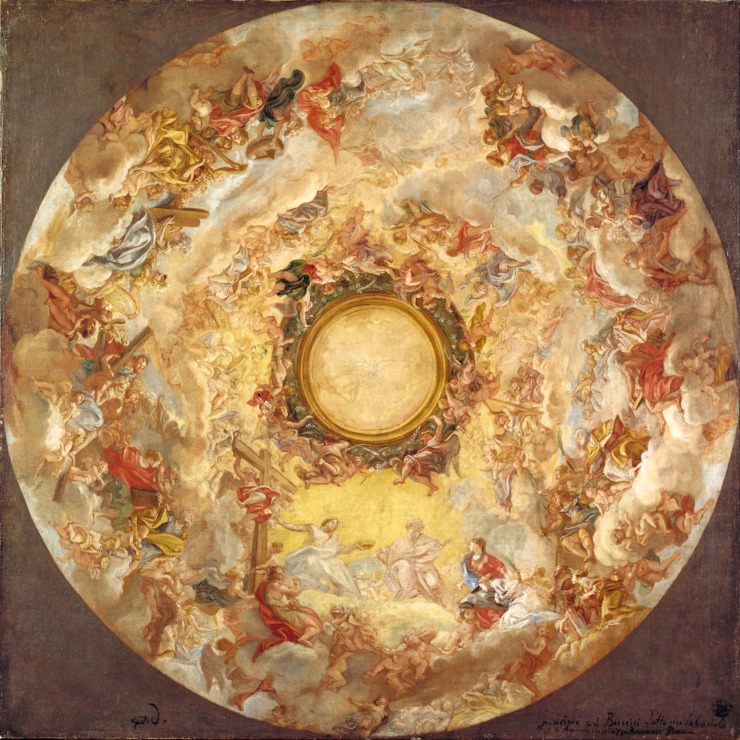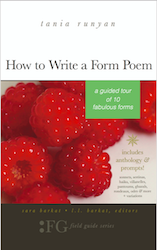< Return to Edgar Allan Poe Poems
In Youth I Have Known One
In youth I have known one with whom the Earth
In secret communing held—as he with it,
In daylight, and in beauty, from his birth:
Whose fervid, flickering torch of life was lit
From the sun and stars, whence he had drawn forth
A passionate light such for his spirit was fit—
And yet that spirit knew—not in the hour
Of its own fervor—what had o’er it power.
Perhaps it may be that my mind is wrought
To a ferver by the moonbeam that hangs o’er,
But I will half believe that wild light fraught
With more of sovereignty than ancient lore
Hath ever told—or is it of a thought
The unembodied essence, and no more
That with a quickening spell doth o’er us pass
As dew of the night-time, o’er the summer grass?
Doth o’er us pass, when, as th’ expanding eye
To the loved object—so the tear to the lid
Will start, which lately slept in apathy?
And yet it need not be—(that object) hid
From us in life—but common—which doth lie
Each hour before us—but then only bid
With a strange sound, as of a harp-string broken
T’ awake us—’Tis a symbol and a token—
Of what in other worlds shall be—and given
In beauty by our God, to those alone
Who otherwise would fall from life and Heaven
Drawn by their heart’s passion, and that tone,
That high tone of the spirit which hath striven
Though not with Faith—with godliness—whose throne
With desperate energy ‘t hath beaten down;
Wearing its own deep feeling as a crown.
-Edgar Allan Poe
Enjoy Artistic Representations of “In Youth I Have Known One” by Edgar Allan Poe

Rocky Mountains by Max Cornelius, 19th century.

St. Agnes is Received into Heaven by Giovanni Battista Gaulli ca. after 1689.
Listen to Readings of “In Youth I Have Known One”
That’s it for readings of In Youth I Have Known One by Edgar Allan Poe!
About Edgar Allan Poe
Edgar Allan Poe (1809-1849) published his first collection of poems, Tamarlane, and Other Poems, in 1827, when he was 18 years old. A tendency to run up debts (including for gambling) kept him in constant state of reinvention – college student, poet, short story writer, soldier/officer school, literary journal editor and critic.
The Poe who arises from Symons’ hand (his biographer in The Telltale Heart: The Life and Works of Edgar Allan Poe) is a man who first and foremost was determined to put Southern letters on the map, aiming to wrest control from the literary establishment in New York and New England (Poe aimed some rather pointed arrows at writers like Henry Wadsworth Longfellow). For his own writing, he wanted to be considered a poet. The poems were the important works; the stories were almost after-thoughts, almost dashed off primarily to raise funds. And he always needed money.
His personal life seemed to have stayed a general mess, but he had an enormous impact on both American and world literature. Consider the stories and poems that have been filmed, published, re-published, anthologized, celebrated and widely admired for more than 150 years: “Murders in the Rue Morgue,” “Fall of the House of Usher,” The Raven, “The Tell-Tale Heart,” Annabel Lee, “The Bells,” “Ulalame,” “To Helen.”
We associate Edgar Allan Poe with 19th century gothic. His stories are full of mystery, passion, horror, violence, death, and the supernatural. And yet his poems, especially “The Raven” and “Annabel Lee,” made him famous in pre-Civil War America and established his literary reputation.
Questions and mystery surrounded Poe’s own life and death, and continue even today – we may never know who left three roses and a bottle of cognac on his grave in Baltimore for decades until 2011 (alas, the “Poe Toaster” disappeared or died, to be seen nevermore).
You can read more about Poe’s biography in the articles Poets and Poems: Meeting Edgar Allan Poe and Forgotten Classics, The Telltale Heart by Julian Symons by Glynn Young, from which this biography was compiled.
I hope you enjoyed In Youth I Have Known One by Edgar Allan Poe!
BUY ‘HOW TO WRITE A FORM POEM’ NOW!
